How To Grow And Care For Ficus Elastica Tineke?
Written by Ivy
Dec 24 2021
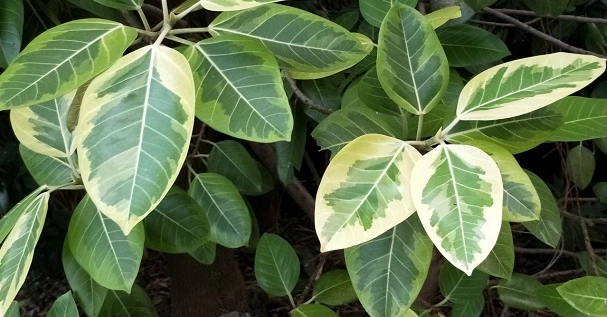
Ficus elastica Tineke is an evergreen woody foliage plant of Ficus. Ficus elastica Tineke leaves are large, thick leathery, shiny, round to long oval; The leaf surface is dark green and the back is light green. At the initial stage, it is wrapped outside the terminal bud. After the new leaves are extended, the stipules fall off and leave stipule marks on the branches. Ficus elastica Tineke has yellow and white patches on the green leaves, which is more beautiful and pleasing to the eye. Ficus elastica Tineke likes warm, humid and sunshine deficient environment, and is also slightly resistant to shade and cold. It is required to grow well in fertile and fluffy soil and in neutral or acidic soil.
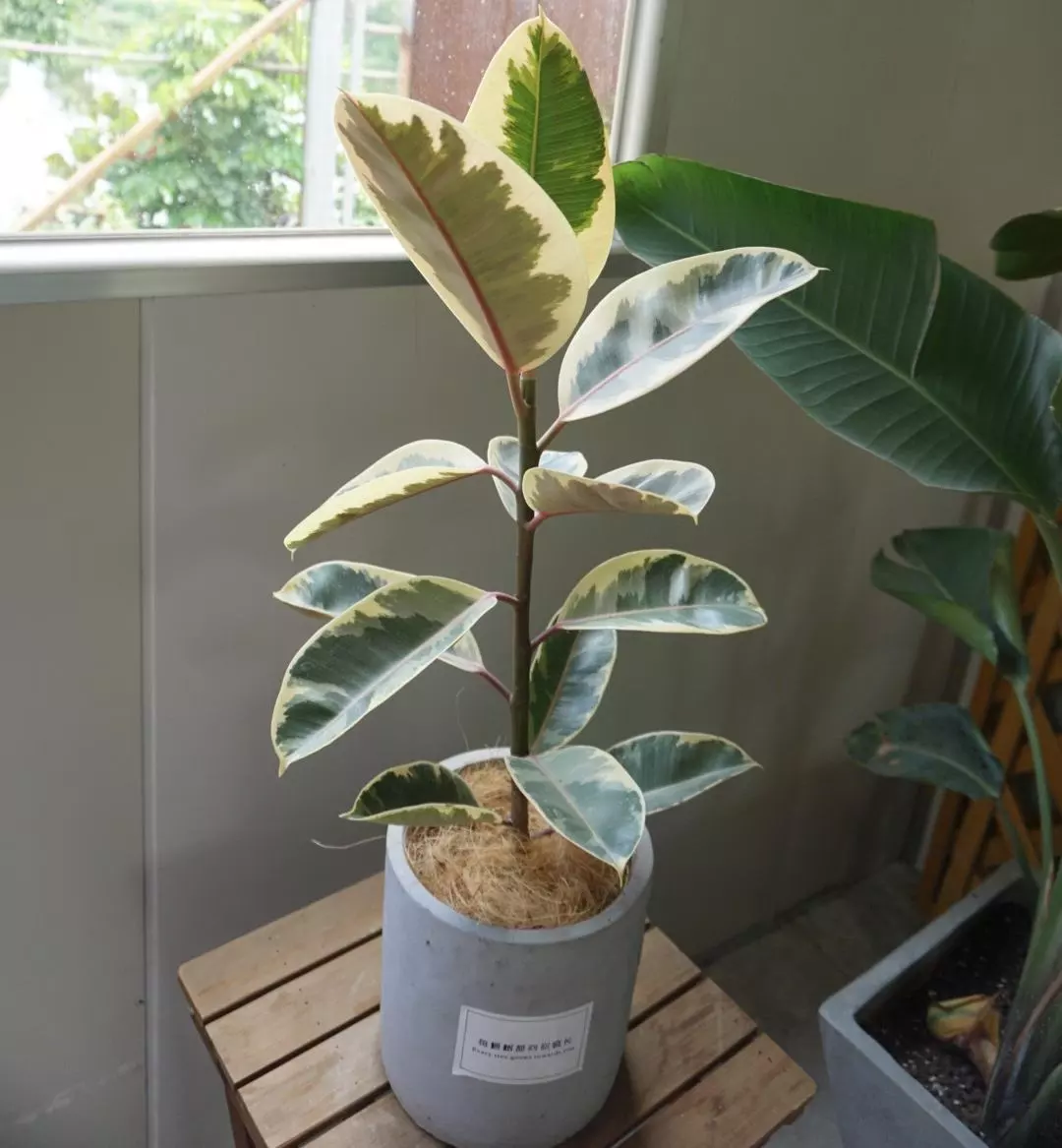
Ficus elastica Tineke likes humid environment, and plant growth cannot be separated from sufficient water. Watering Ficus elastica Tineke needs to master the principle of seeing dry and seeing wet. Keep the soil moist in spring, summer and autumn. Water it once or twice a day in summer and the temperature is low in winter. At this time, Ficus elastica Tineke grows slowly. At this time, reduce the watering of plants and keep the soil dry.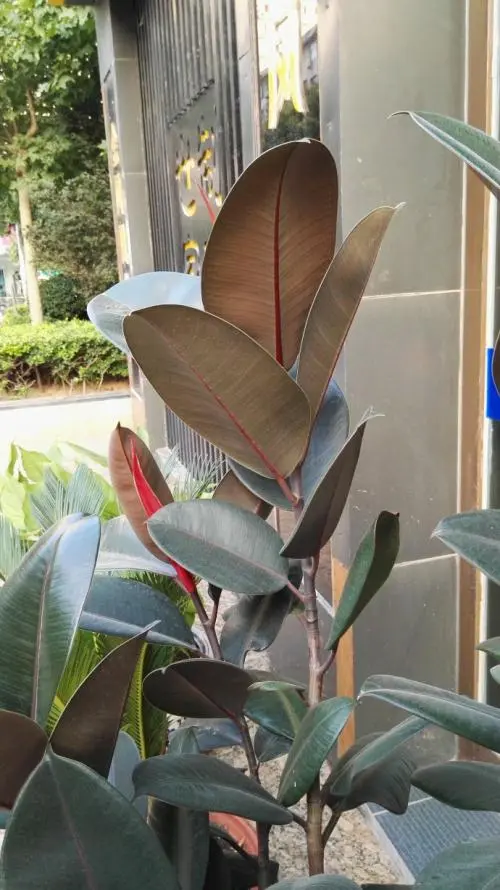
One thing is particularly important. The knife or gardening scissors used to trim Ficus elastica Tineke must be sharp and disinfected in advance. You can wipe it with alcohol, scald it with boiling water, or even soak it in soap solution. The pruning of Ficus elastica Tineke is carried out above each growth node. The growth node is the place where the leaves grow. The pruning is carried out two or three centimeters above the growth node. When pruning Ficus elastica Tineke, we must cut it obliquely, usually at an oblique angle of 45 degrees, so as to promote the growth of more branches, Also to avoid incision ponding.
When trimming Ficus elastica Tineke each time, do not exceed 1 / 2 of all branches. Each pruning is about 1 / 3 ~ 1 / 2 of all branches and leaves. If pruning is excessive, photosynthesis will be affected and it is difficult to restore growth. When maintaining the potted Ficus elastica Tineke, after some pruning, the whole branches and leaves look bare, but don't worry. As long as it is maintained reasonably, Ficus elastica Tineke can soon restore the vigorous state of branches and leaves. Before pruning, we must make a good plan in advance, that is, what kind of shape we want, so that Ficus elastica Tineke can grow elegant branches and become a shrub with uniform plant growth. When pruning Ficus elastica Tineke, if we find some withered or damaged branches, we must cut them off in time. The cut is cut into an oblique angle of 45 degrees every time.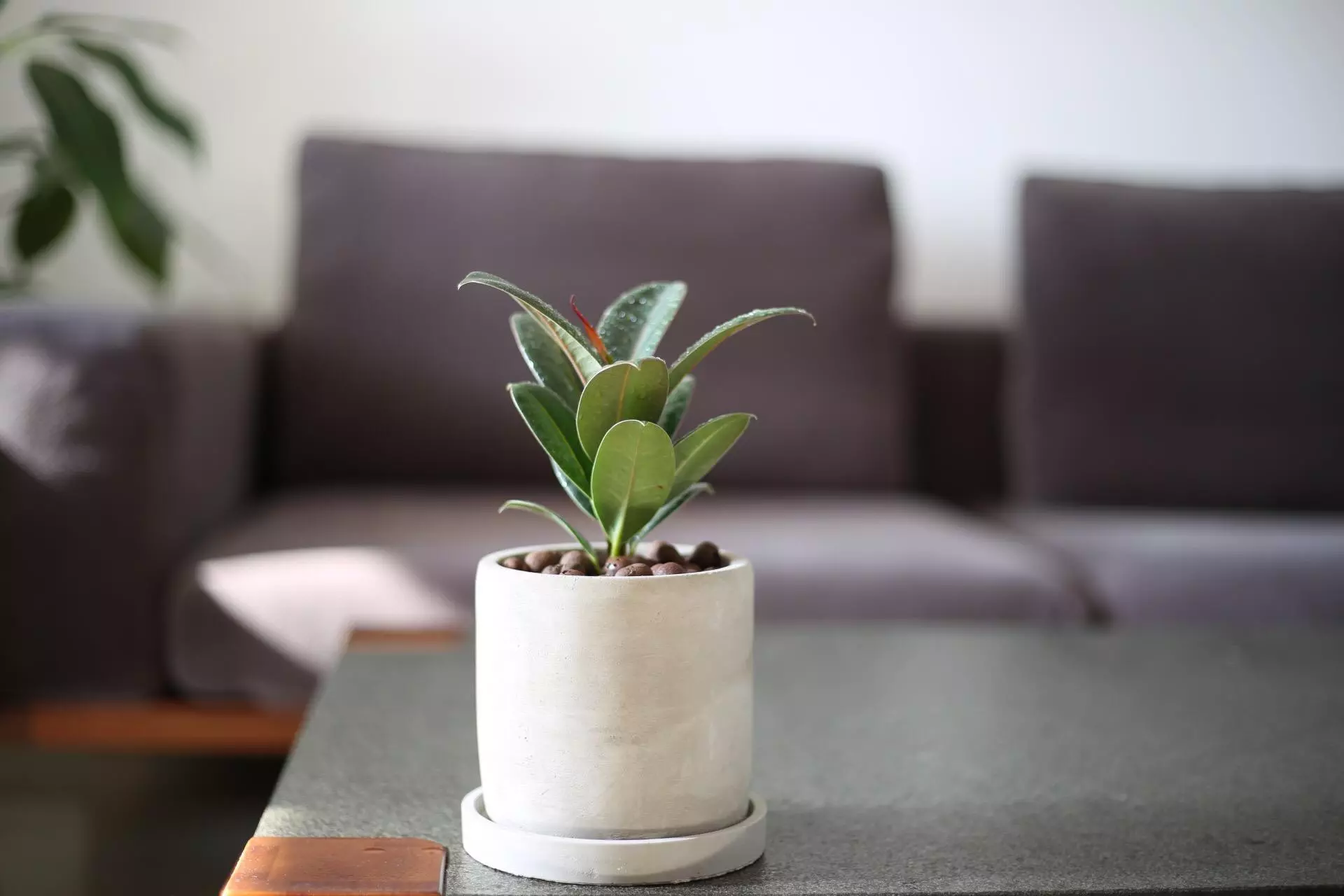
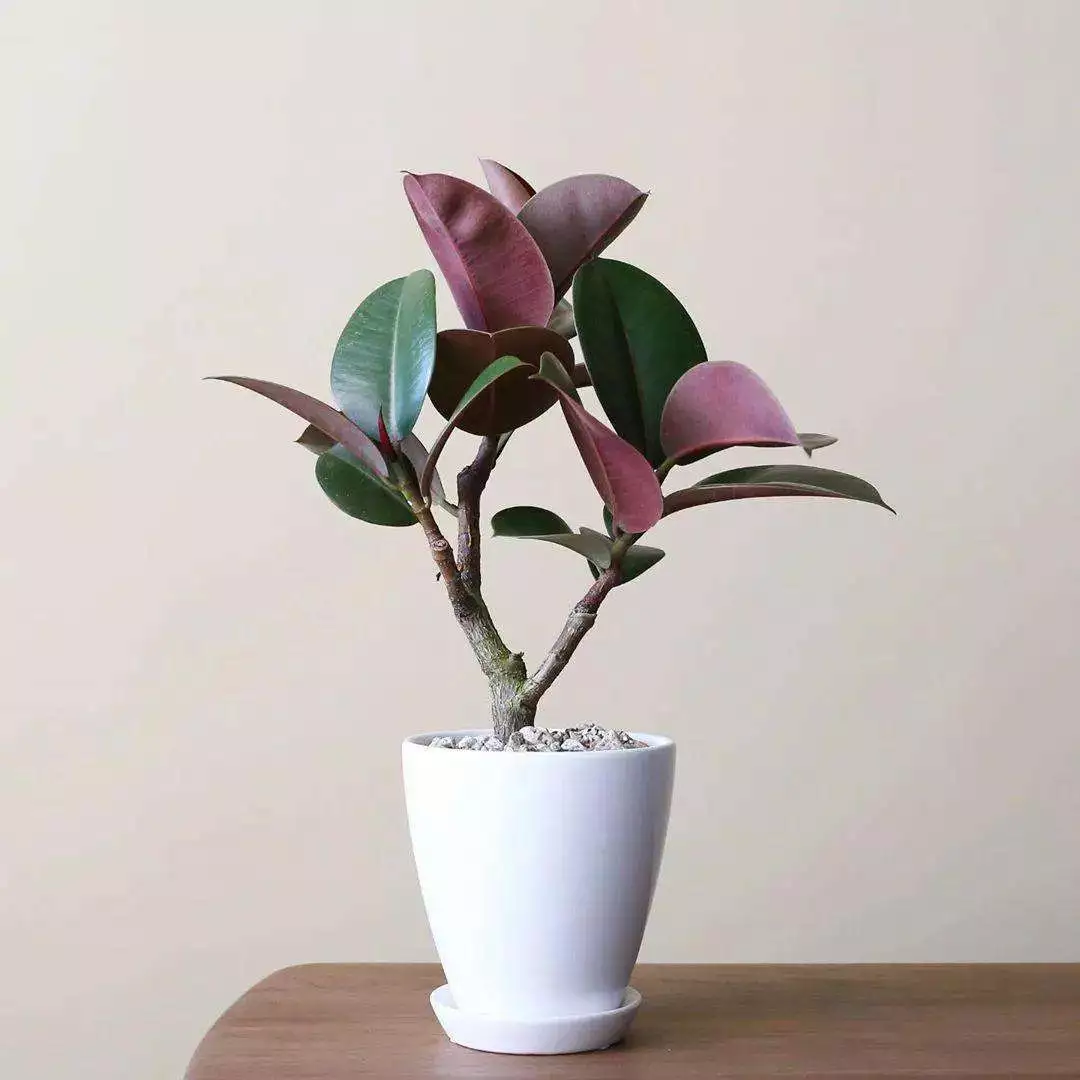
Moreover, Ficus elastica Tineke is highly ornamental. As a potted plant, it not only looks very pleasing to the eye, but also plays a good decorative effect and adds green to our home environment. In addition, Ficus elastica Tineke also has a good absorption of harmful temperament in the air and can purify the air.
Ficus Elastica Tineke Quick InfoFicus Elastica Tineke Care in DetailFicus Elastica Tineke WateringFicus Elastica Tineke SoilFicus Elastica Tineke LightFicus Elastica Tineke TemperatureFicus Elastica Tineke HumidityFicus Elastica Tineke FertilizerFicus Elastica Tineke PruningFicus Elastica Tineke RepottingFicus Elastica Tineke PropagationFicus Elastica Tineke Propagation from CuttingFicus Elastica Tineke Propagation from LayeringFicus Elastica Tineke Propagation from SeedIs Ficus Elastica Tineke Poisonous To Cats?Can Ficus Elastica Tineke Be Planted at Home?
Ficus Elastica Tineke Quick Info
| Botanical/Scientific Name | Ficus Elastica Tineke |
| Common Name | Tineke Rubber Tree |
| Uses | Nausea, general pain or digestive problems |
| Origin | India and Indonesia |
| Light Care | Bright, indirect light |
| Soil Care | Well-draining and well-aerated soil |
| Temperature Care | 60-80 F degrees |
| Humidity Care | Average household humidity |
| Watering | Watering a once a week |
| Pruning Care | Don't require much pruning |
| Fertilizer Care | Half-strength balanced liquid fertilizer |
| Propagation | Stem or leaf cuttings |
| Toxic | Plant is toxic to cats and dogs. |
Ficus Elastica Tineke Care in Detail

Ficus Elastica Tineke Watering
Ficus elastica Tineke is relatively resistant to damp and heat and has strong waterlogging resistance. During maintenance, it is necessary to ensure that the soil is wet. Generally, it is necessary to replenish water after it is slightly dry. It can be watered once every 1-5 days. Ficus elastica Tineke also likes fertilizer. Watering is combined with fertilization to replenish nutrients. Watering can be appropriately reduced when cooling.Ficus elastica Tineke likes humid environment, and plant growth cannot be separated from sufficient water. Watering Ficus elastica Tineke needs to master the principle of seeing dry and seeing wet. Keep the soil moist in spring, summer and autumn. Water it once or twice a day in summer and the temperature is low in winter. At this time, Ficus elastica Tineke grows slowly. At this time, reduce the watering of plants and keep the soil dry.
Ficus Elastica Tineke Soil
Ficus elastica Tineke has a large plant type and fast growth speed. It needs to choose a larger soil basin for breeding. Ficus elastica Tineke likes to grow in loose, fertile and well drained soil. It can be filled with the soil mixed with rotten leaf soil, garden soil and coarse sand, and then planted in the soil basin.Ficus Elastica Tineke Light
Ficus elastica Tineke has strong adaptability to light. It is recommended to place it in a place with good daylighting for maintenance. Sufficient light is more conducive to plant growth. In addition, the light is strong in summer. At this time, corresponding shading measures should be taken to avoid damage to Ficus elastica Tineke caused by strong light. In other seasons, full sunshine maintenance can be given.Ficus Elastica Tineke Temperature
Ficus elastica Tineke likes relatively warm growth conditions. It is best to keep the temperature between 15-35 ℃ at ordinary times, which is most suitable for its growth. In winter, we must keep the temperature above 3 ℃, otherwise Ficus elastica Tineke may turn yellow and fall leaves.Ficus Elastica Tineke Humidity
In the process of daily maintenance of Ficus elastica Tineke, we need to keep Ficus elastica Tineke in a wet state. In summer, the water evaporates rapidly. We also need to spray water on Ficus elastica Tineke's leaves and surrounding areas to improve the humidity in the air. Note that we can't let water accumulate in the chassis of the soil basin, which is easy to lead to the root rot of Ficus elastica Tineke.
Ficus Elastica Tineke Fertilizer
When Ficus elastica Tineke is in the growth stage, we need to apply compound fertilizer containing phosphorus to the plant every 60 days to make the branches of Ficus elastica Tineke grow more robust, and apply potassium dihydrogen phosphate solution to the plant to control the growth height of Ficus elastica Tineke.Ficus Elastica Tineke Pruning
As long as the environment is suitable, Ficus elastica Tineke can be trimmed all year round. Of course, the ideal pruning time is in late spring and early summer, that is, from May to June every year. When trimming Ficus elastica Tineke, it can be molded into any shape, and its branches can be kept in any length to see what effect we want. However, it should be noted that for smaller potted Ficus elastica Tineke, at least two or more leaves should be retained on the branches. For larger potted Ficus elastica Tineke, at least 6 ~ 10 leaves should be retained on each branch.One thing is particularly important. The knife or gardening scissors used to trim Ficus elastica Tineke must be sharp and disinfected in advance. You can wipe it with alcohol, scald it with boiling water, or even soak it in soap solution. The pruning of Ficus elastica Tineke is carried out above each growth node. The growth node is the place where the leaves grow. The pruning is carried out two or three centimeters above the growth node. When pruning Ficus elastica Tineke, we must cut it obliquely, usually at an oblique angle of 45 degrees, so as to promote the growth of more branches, Also to avoid incision ponding.
When trimming Ficus elastica Tineke each time, do not exceed 1 / 2 of all branches. Each pruning is about 1 / 3 ~ 1 / 2 of all branches and leaves. If pruning is excessive, photosynthesis will be affected and it is difficult to restore growth. When maintaining the potted Ficus elastica Tineke, after some pruning, the whole branches and leaves look bare, but don't worry. As long as it is maintained reasonably, Ficus elastica Tineke can soon restore the vigorous state of branches and leaves. Before pruning, we must make a good plan in advance, that is, what kind of shape we want, so that Ficus elastica Tineke can grow elegant branches and become a shrub with uniform plant growth. When pruning Ficus elastica Tineke, if we find some withered or damaged branches, we must cut them off in time. The cut is cut into an oblique angle of 45 degrees every time.
Ficus Elastica Tineke Repotting
Comfortable and fertile slightly acidic soil must be used to raise Ficus elastica Tineke. In the process of daily maintenance, the pot soil must be repotted once a year, and the flower pot of mature plants needs to be replaced every 2 ~ 3 years, so as to provide a better growth environment for Ficus elastica Tineke plants. In Ficus elastica Tineke repotting, we must trim the roots of the plant to ensure the growth of the plant.Ficus Elastica Tineke Propagation

Ficus Elastica Tineke Propagation from Cutting
When Ficus elastica Tineke propagation from cutting is adopted, it is generally carried out in the spring of each year, especially when the temperature in the environment rises. Select the branches and stems that have been growing for 5 years as cuttings, cut them together with the terminal buds, cut them to an appropriate length and put them into clean water. Place it for several hours, wash the incision, and then take it out for cutting in the prepared soil. Then pay attention to sunlight and humidity. Generally, new roots can grow in about four weeks. After 2 months, it will be transferred to flower pots for planting.Ficus Elastica Tineke Propagation from Layering
Ficus elastica Tineke propagation from layering is generally carried out when the plant is most prosperous, and it is still on the young branches that grow within two years. Clean the incision, cover it with plant ash, take root after half a month, and then transfer it to the flower pot for planting.Ficus Elastica Tineke Propagation from Seed
When Ficus elastica Tineke propagation from seed is adopted, the seeds used for planting shall be carefully selected, and the seeds that are full, free of damage and no pest damage shall be selected. Indian banyan can grow fruit in October, pick it and put it in the bag, and then soak the bag in clean water. The seeds were obtained after kneading and bleaching. However, some seeds with different growth years will not grow new buds.Is Ficus Elastica Tineke Poisonous To Cats?
Ficus elastica Tineke is a perennial tree plant of Ficus, which is really poisonous. In the maintenance process, we should pay attention to avoid excessive contact to avoid poisoning. According to the research, the leaves and seeds of Ficus elastica Tineke are toxic. Its toxicity is mainly contained in its juice. Once it comes into contact with the skin, it will have discomfort symptoms such as redness, itching, swelling and pain. If it is accidentally eaten, it may lead to coma, weakness of limbs and death in serious cases.
Can Ficus Elastica Tineke Be Planted at Home?
Many people are very frightened when they hear that Ficus elastica Tineke is poisonous. Although Ficus elastica Tineke does contain certain toxicity, as long as we maintain it normally and do not over contact its juice or eat it by mistake, keeping it at home will not do any harm to our health, because the toxicity of Ficus elastica Tineke only lies in the internal juice, It will not spread into the air with the air circulation, so Ficus elastica Tineke can be placed at home.Moreover, Ficus elastica Tineke is highly ornamental. As a potted plant, it not only looks very pleasing to the eye, but also plays a good decorative effect and adds green to our home environment. In addition, Ficus elastica Tineke also has a good absorption of harmful temperament in the air and can purify the air.
Latest Updated
- Benefits of Bugleweed - 7 Science-backed Health Benefits
- Bugleweed Dangers & Side Effects - Is It Poisonous?
- How to Plant Evergreen Trees - What You Should Know
- When to Plant Evergreens - Grow Guide for Evergreen Trees
- 12 Wonderful Evergreen Shrubs for Your Garden
- 12 Popular Evergreen Plants with Pictures for Beginners
- When And How To Prune A Lilac Bush Like a Pro
- How to Grow & Care for Lilac Vine (Hardenbergia Violacea)
- Japanese Lilac Tree (Syringa Reticulata) Care & Propagation Guide
- Shumard Oak Pros and Cons - What to Know
Popular Articles
- Winter maintenance of Antirrhinum Majus
- How to Grow Terminalia Mantaly Tree
- How to Grow and Care for Crossostephium Chinense
- How to grow Antirrhinum Majus in spring
- Peristeria Elata (Dove Orchid) Profile: Info & Care Guide
- Underwatered Snake Plant (Sansevieria Trifasciata) - Signs And How To Fix
- How to Care for Brazilian Jasmine Plant (Mandevilla Sanderi)
- How to Grow & Care for Graptopetalum Purple Delight in Summer
- Rosa Chinensis (China Rose): Plant Growing & Care Tips
- How to Care for Baby Sun Rose (Aptenia Cordifolia)